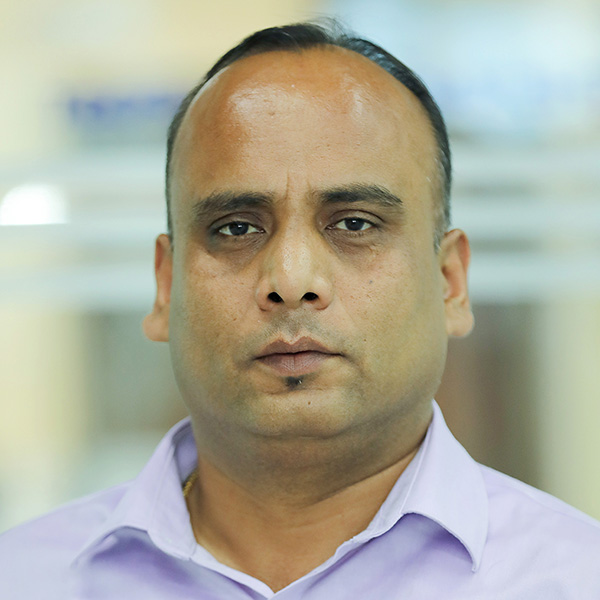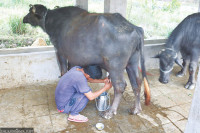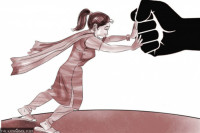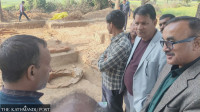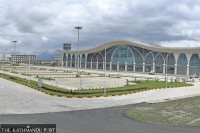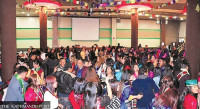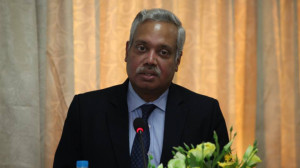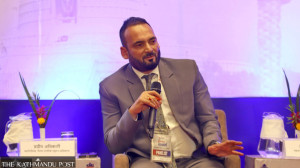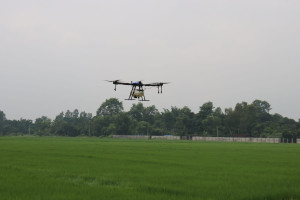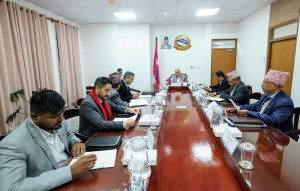National
51 including top monarchist leaders arrested, pro-king activities to be curbed
Government to provide free treatment to the injured, vows action against perpetrators.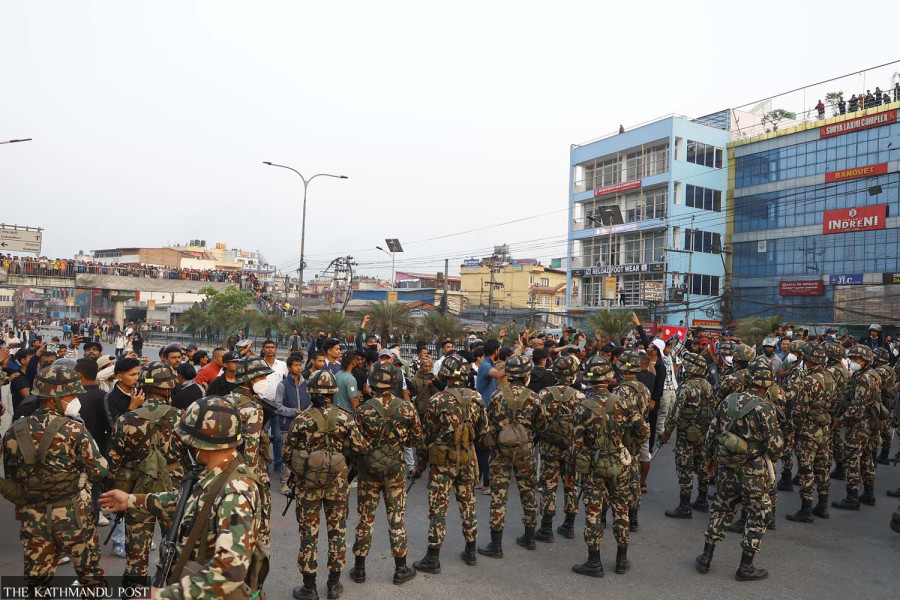
Anil Giri
Police on Friday arrested 17 people including senior vice-chairman of the Rastriya Prajatantra Party Rabindra Mishra, General Secretary Dhawal Sumsher Rana, pro-monarchy activists like Swagat Nepal, Shepherd Limbu and Santosh Tamang as well some other leaders for instigating violence during Friday’s pro-monarchy demonstrations that led to deaths, vandalism of private properties and arson.
The chief coordinator of the pro-royalist movement, Nawaraj Subedi, has been put under house arrest, according to home ministry sources. And security agencies are searching for Durga Prasai, the ‘chief commander’ of the ongoing royalist movement. His mobile phone is switched off and we are trying to locate him, a senior government security official said.
A total of 51 people, including above-mentioned leaders and protestors, have been arrested on Friday, according to the home ministry.
The government also decided to take all necessary steps to curb possible demonstrations and protests by pro-monarchy and pro-Hindu parties, a minister told the Post.
A Cabinet meeting on Friday evening also discussed the evolving security situation following Friday’s violent protest in the Tinkune area near Koteshwar, Kathmandu.
“We had information that royalists would create a law and order situation on Friday,” a senior security official said. “We had made security arrangements accordingly.”
“With Friday’s arson, vandalism and killings, public sympathy and support for royalists have declined significantly. We expect deep divisions within the various pro-Hindu and pro-monarchy groups following Friday’s violence. But, now onwards, we will take all necessary measures to contain their activities,” the official told the Post.
Demanding the restoration of monarchy and a Hindu state, several pro-monarchy and Hindu groups have come together for Kathmandu-centric protests. On March 9, they welcomed former king Gyanendra Shah upon his return from Pokhara.
Besides the Rastriya Prajatantra Party, several pro-Hindu and pro-monarchy groups and organisations have formed an alliance led by Subedi, 86. In the 1980s, he served as the chairman of the Rastriya Panchayat, legislative body during the partyless Panchayat system.
“The arrests are arbitrary and we demand their immediate release,” said Uddhav Raj Bhetuwal, head of the RPP’s information and communication department.
Friday’s Cabinet meeting condemned the arson, killings and vandalism, said Prithvi Subba Gurung, the government spokesperson.
“The government will ensure free treatment of all those injured in the incident. The Cabinet also instructed the Ministry of Home Affairs to investigate Friday’s violence and take action against all those responsible,” said Gurung.
According to the home ministry, nine government vehicles and six private vehicles were damaged, as well as 13 different buildings, houses, restaurants and public places were set on fire by royalist protesters during Friday’s demonstrations.
Similarly 53 Nepal Police personnel, 22 Armed Police Force personnel and 35 protesters were injured during the clashes.
Following the incident, the Ministry of Home Affairs organised a press conference and vowed to book the culprits.
“We have concluded that Friday’s incident is an act of violence, not a political or ideological demonstration,” Chhabi Rijal, the home ministry spokesperson, said. The state will accordingly treat those responsible for the violence, he added.
Two people, including a video journalist of Avenues Television, died during Friday’s royalist protest.
Protest leaders claimed that it was security personnel who incited the protesters by firing tear gas as the mass was building up. But security officials said that the scuffle started after large numbers of protesters started breaching security barricades and moving towards New Baneshwar where the federal parliament is located.
The main person who incited the violence is Durga Prasai, said Rijal. Prasai, a controversial medical college operator who had gotten increasingly closer to former king Gyanendra Shah, had been chosen the “commander” of the protests.
The home ministry issued a stern warning to those involved in the violent protests, stressing that they will be held to account for their acts.
Rijal, the ministry spokesperson, expressed grave concern over the violent demonstrations in the Tinkune area. He condemned the vandalism, arson, and destruction of property, including attacks on hospitals, media offices, political party buildings, businesses, and transport vehicles.
The ministry labelled these acts inhumane and illegal, holding the organisers fully responsible for the ‘criminal acts’. It reaffirmed its commitment to enforcing the rule of law and ensuring that those violating it face legal consequences.
Following the clamping of a curfew in the Tinkune-Baneshwar area by the Kathmandu District Administration Office, pro-monarchy protesters set fire to the Herbs Production & Processing Co Ltd and looted Bhatbhateni Supermarket in Koteshwar. In the aftermath of the clashes, police shot at a protester, who succumbed to the injuries.
A curfew remains in place in the Baneshwar-Tinkune and surrounding areas until 7am Saturday.
During the Cabinet meeting, chiefs of all four security agencies—Nepal Police, Armed Police Force, Nepal Police and National Intelligence Department—were called to brief on Friday’s incident and future demonstrations by pro-royalist parties and groups.




 9.12°C Kathmandu
9.12°C Kathmandu